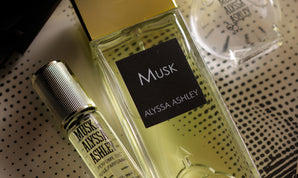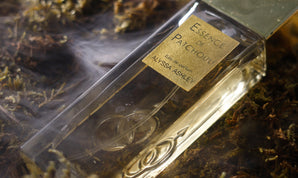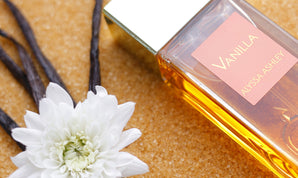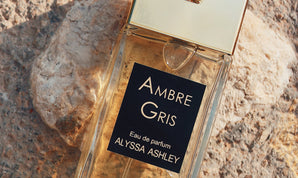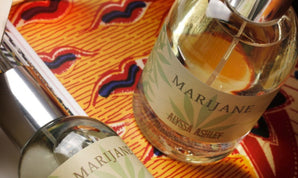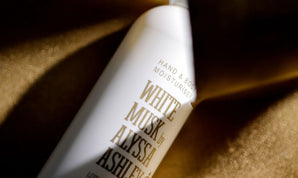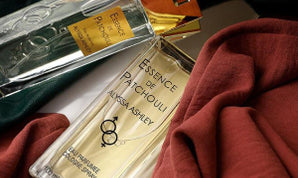The diffusion of incense has reached Turin to be exhibited at the Museum of Antiquities which is located inside the Royal Museums of Turin until January 10, 2021 (this is the official calendar date).
The exhibition dedicated to the ""Lacrima degli Dei"" (Tear of the Gods), which included the entire perfume chain in the heart of the metropolitan city of Turin, temporarily closed due to problems known to most people, could reopen in December.
Silvana Cincotti is the curator of the exhibition, while Roberta Conzato is the President of the Per Fumum Association to whom I asked:
The third edition of Per Fumum was interrupted in compliance with the various DPCM, the exhibition has undergone some variations. Through the enthusiasm and love for perfumes that define you, with what spirit do you face the future of the Association?
Life puts obstacles in our way but we set our own limits, therefore, I am anticipating the theme of the next edition through two significant dates 1921 - 2021. While waiting for further details I invite you to the fourth edition which will take place in Turin at Palazzo Madama
From excitement I suddenly felt like two drops of Chanel N°5, who knows why?
Incēnsum, the name of the museum itinerary, has the aim of making smells known through objects that, in the past, had a scent either because they contained it, or because they were part of the tools of the trade and came into contact with it.
To imagine perfumed smoke and to study its history, through a line that marks time, means to give the right dignity to what in all respects is a great legacy of the past.
Our journey starts here, from the ""incense way"" , a UNESCO World Heritage Site since 2000, which crosses Oman and Yemen to reach distant places where a fleeting glimpse of Boswellie suddenly appears, trees capable of living in places characterized by great drought.
The incense is obtained mainly from the incision of the shrub of the Sacred Boswellia through resin channels from which ""drips"" a white juice that hardens when it’s in contact with the air.
The oldest trees produce the most fragrant resin.
Incense was one of the three gifts offered by the Three Wise Men to Jesus, a natural resin whose fumigation has a strong value in the Christian religion but also in Jewish custom.
Benefits of incense
Introduced from China to Japan around 538-710 A.D., Kō is an integral part of the customs and habits of the Japanese people, not only is it used in ceremonies or during rituals, but a real art has developed, KOH - DO, literally meaning ""incense way"".
Four hundred years ago, in Japan, a Zen priest painted a parchment that exalted the ten virtues of this resin. The document was called ""The ten virtues of incense (Kō - Koh)"", namely the benefits deriving from its use:
- Incense facilitates communication with the transcendental
- Incense purifies the mind and also the body
- Incense removes anxieties and impurities
- Incense keeps attention and readiness alive
- Incense can be a companion in moments of loneliness
- Incense guarantees a moment of peace in a hectic world
- Even when incense is abundant it never gets boring
- Even a little is very rewarding
- If stored for a long time it maintains its qualities
- If used every day, it does no harm
The base of Japanese incense is the powder of Tabu-no-ki bark to which other ground ingredients or essential oils are added, in particular: benzoin, sandalwood, agar wood, olibanum.
The compound is worked by giving it a stick shape and then drying it. In order to obtain a better performance from our perfumed stick, the type of support should not be overlooked.
Incense in perfumery
Incense is also a raw material for perfumery: a few weeks after harvesting, the resin thickens in the form of gum resin, from which we can obtain an essential oil, a resinoid or an absolute.
The essential oil is obtained by steam distillation of the raw material.
The resinoid, with its amber colour, is obtained by treating the gum resin with a chemical compound, benzene.
The absolute is obtained after having been dissolved in ethanol, the resinoid, which is frozen in order to eliminate any type of impurity and then dissolved in alcohol, after evaporation of the solvent.
A pungent odour, recognizable by everyone from a distance despite its different names: it is the Incensum of the Romans, the Olibanum, in English it is Frankincense while for the Jews it is known as lebonah.
In the months of May and June the Jabali, the mountain Bedouins, extract the resin and let it dry and crystallize throughout the whole summer; the produce is then collected in Sumhurum, the city where, according to legend, the Queen of Sheba lived and from which all the expeditions to the Mediterranean departed.
